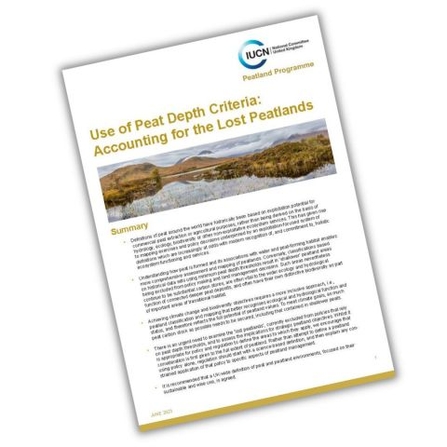Use of Peat Depth Criteria: Accounting for the Lost Peatlands
Almost half of our peatland resource risks being side-lined by reliance on peat depth criteria for mapping and decision making derived from an historic interest in peatlands for exploitative use. Peat depth thresholds used to identify important areas for commercial peat extraction and agriculture exclude shallower peatlands which are hugely significant for the much broader range of peatland ecosystem services that we now value.
A new IUCN UK Peatland Programme briefing, 'Peat Depth Criteria: Accounting for the Lost Peatlands', explains that defining and managing our peatlands in a way that reflects their full potential of value is vital to achieving our climate, water and biodiversity goals. It recommends assessing the impact for strategic peatland objectives of peatlands excluded by depth criteria policies and to develop a more inclusive approach to peatland classification and mapping that better recognises ecological and hydrological function and status.

